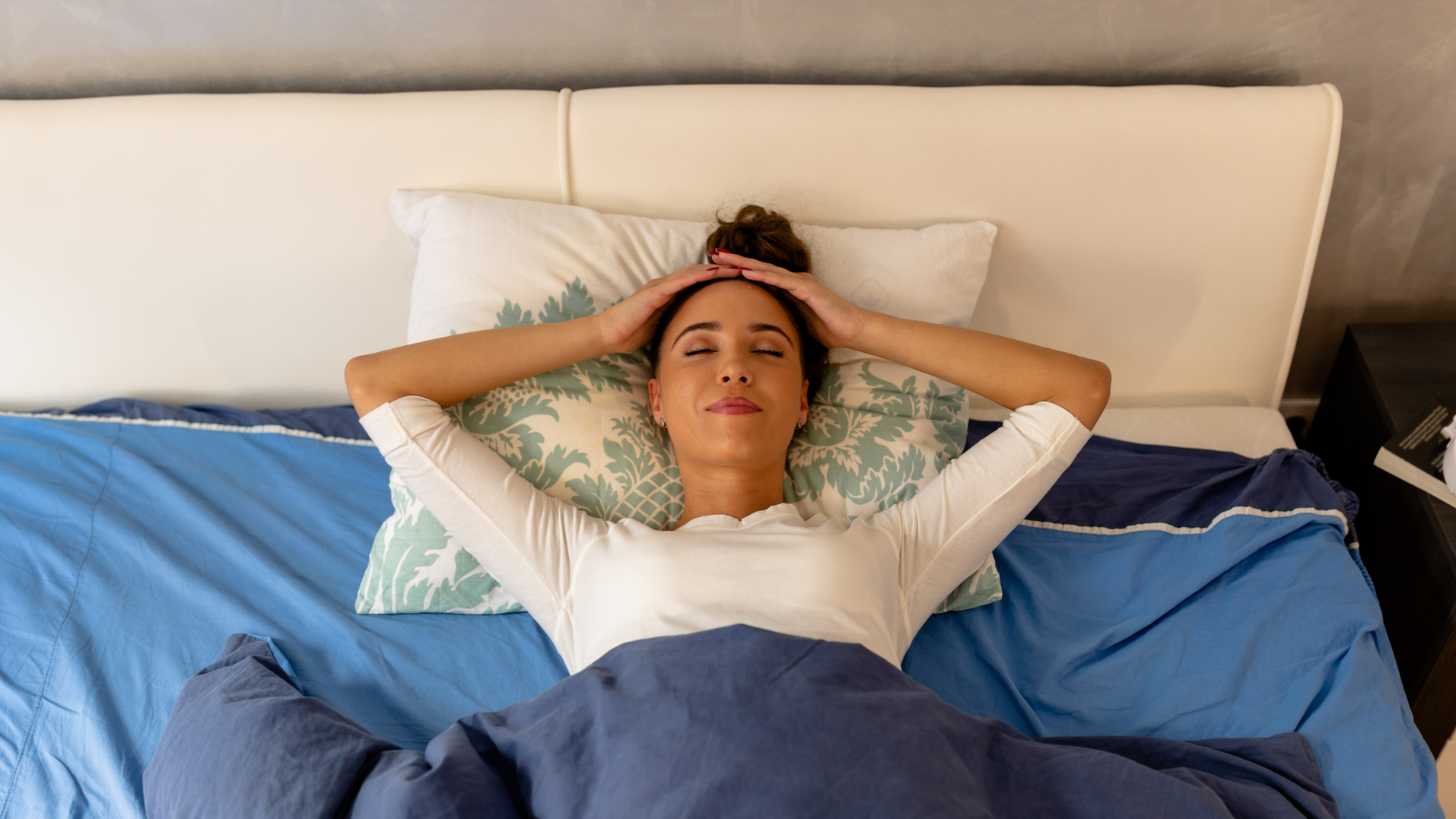I tried a body scan meditation every night before bed for a week—here's why I'd recommend it
This popular form of meditation helped relax my mind and body, and meant I slept better than ever


Like many others, I can find it difficult to get to sleep. Often my mind is busy running through the day's events or worrying about tomorrow's to-do list, and sleep feels frustratingly out of reach. So recently, I turned to meditation.
There's a growing body of research that indicates mindful practices can help improve sleep quality. One study published in JAMA Internal Medicine, for example, found that participants who took part in a mindfulness awareness program for six weeks reported less insomnia and fatigue at the end, when compared with other participants who attended sleep education classes instead. Plus, a recent review of research done in this area also concluded that "mindfulness meditation may be effective in treating some aspects of sleep disturbance".
There’s a huge variety of meditation techniques, but the one that caught my eye is the body scan method.
What is a body scan meditation?
Essentially, body scan meditation involves focusing on each part of your body in turn, scanning it for feelings of tension and pain.
"Meditation is when we focus our mind on one thing," says Charlie Faulkner, meditation and breathwork class facilitator at Seven Lion Yard. "In the body scan method our awareness comes to points of tension in the body. We draw the awareness methodically through our body, usually from the bottom of the body up to the top, and we focus on the different sensations there and breathe relaxation into that area."

Charlie is a meditation and breathwork class facilitator at Seven Lion Yard. With more than 600 hours of training in a range of variety of yoga styles, meditation and breathwork, her mission is to find a practice that works for each individual.
What are the benefits of a body scan meditation?
First and foremost, it can be a potent way to ease feelings of stress. "Often we are holding tension, or micro-tensions, in areas of the body that we don’t even realize," says Faulkner. "When we learn to become aware of these sensations, and then actively release them, we can create a deeper feeling of calm within our being."
This can have a great impact on our sleep. As she points out, one of the biggest deterrents to being able to fall asleep, or remain in a deeply restorative sleep, is residual stress or overactivity of the mind and body. Throughout much of the day we are stimulated with our sympathetic nervous system switched on, but body scan meditation can help us move out of this state.
"Sleep is a time when our mind and body have the opportunity to go into recharge mode," says Faulkner. "We can step into our parasympathetic nervous system—where we can rest, heal and replenish our energy stores. Body scan meditation helps us to transition into this more relaxed state of being before we sleep, preparing the body by giving the mind a singular point of focus and physically softening each area of the body."
I tried a body scan meditation to help me sleep—my results
Here's what I found after completing a body scan meditation every night for a week before bedtime.
I felt more connected to my body
It may sound cliché, but I really did feel more connected to my body after engaging in these body scan meditations. It's very rare that we spend time thinking about how our physical form is feeling and functioning, and by drawing attention to different points on my frame, I was able to appreciate my body in its entirety and notice when something didn't feel quite right.
This gave me a strong feeling of being grounded within my body—something that helped during points of stress in the day, too.
It quietened my mind
Being guided to focus on parts of my body as I lay in bed at night quickly drew me out of my mind and meant my anxious thoughts blurred into the background. It gave me something to think about other than the decisions I'd made that day, and helped me release stress and tension.
Start your week with achievable workout ideas, health tips and wellbeing advice in your inbox.
Although sometimes thoughts did filter through and interrupt my meditation, by the end of the week I found I was better able to brush them away and continue focusing on my practice.
I drifted off to sleep easily
While sometimes it can take me a good while to fall asleep, on the nights I followed a body scan meditation I fell into a deep slumber quickly and easily—sometimes even before the guided meditation had finished!
I woke up feeling refreshed and as though I'd had a deep and restful sleep, and my whole body felt relaxed as a result.
How to do a body scan meditation
Keen to try it yourself? Faulkner has provided a guided meditation, as well as an easy step-by-step guide below. I lay on my back in bed, but you can choose whatever starting position feels comfortable.
- Give yourself a few minutes to get comfortable and when you feel ready to begin, settle in stillness.
- As you begin, start to notice the support of your bed (or wherever you may be). Allow your body to be heavy, remembering that, in this moment, it is fully supported.
- Begin by noticing your breath, and encourage it to be a little deeper, slower and longer.
- Draw your awareness to the tips of your toes and bottoms of your feet. Notice their warmth and any other sensations. With your next inhale imagine the body making space, and as you exhale, focus on softening that area of the body.
- Move your awareness up to your shins and the calves and repeat the process.
- Now do the same for your thighs and glutes, and then the trunk of your body (your back, belly and chest). Next, focus on your shoulders, neck and the back of the head, and then finally your face, forehead and jaw.
- As you lie here, having focused on each part of your body in turn, imagine yourself floating just above you, noticing your entire body. Feel yourself soft, supported and peaceful.
- Over the next few breaths notice your body gently undulating as you breathe. Feel the gentle expansion, followed by a comforting softening.

Claire is a freelance journalist with more than 15 years experience. Specializing in health, wellbeing and women’s lifestyle topics, Claire was previously the editor of Natural Health magazine and Health&Wellbeing magazine, and has written for titles including Stylist, Platinum, MadeForMums, Happiful, and In The Moment.